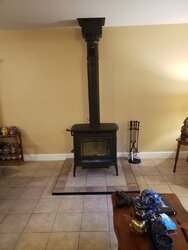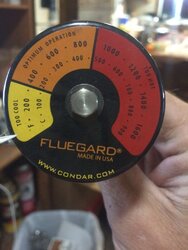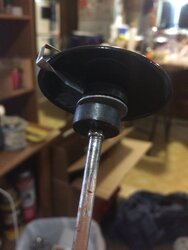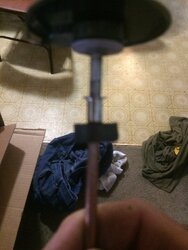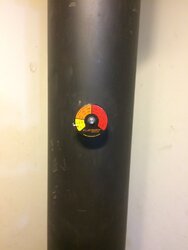I'm new here but have been lurking for some time. I have a hearthstone manchester stove with a chimney I'd approximate at 15 ft. For those unfamiliar its cast iron but the stove top is ribbed and separated from the firebox. (Sorry if I'm unfamiliar with terms and explaining this poorly)
I'm using cherry and oak that I have verified is under 20% moisture by splitting and testing. I can burn a hot fire or at least I think so and the stove really throws some heat but isn't doing as much as I'd like. I have a few concerns
1. The installer said to place the homesaver thermometer on the stovetop but that to me seems strange since its insulated from the fire and I can never get it out of the creosote range. Where should I place it on this stove?
2. The installer said not to touch the flue damper... I find that the stove retains more heat if i use it but i could be making this up. Should i avoid using it? Does using it have any adverse effect on the chimney?
3. I see some of you posting pictures of what I would call an inferno. Do you maintain your fire that way? Is that how you're keeping the temp high?
Sorry for 1 million questions I just dont want to make all different threads. Any help is appreciated
I'm using cherry and oak that I have verified is under 20% moisture by splitting and testing. I can burn a hot fire or at least I think so and the stove really throws some heat but isn't doing as much as I'd like. I have a few concerns
1. The installer said to place the homesaver thermometer on the stovetop but that to me seems strange since its insulated from the fire and I can never get it out of the creosote range. Where should I place it on this stove?
2. The installer said not to touch the flue damper... I find that the stove retains more heat if i use it but i could be making this up. Should i avoid using it? Does using it have any adverse effect on the chimney?
3. I see some of you posting pictures of what I would call an inferno. Do you maintain your fire that way? Is that how you're keeping the temp high?
Sorry for 1 million questions I just dont want to make all different threads. Any help is appreciated


